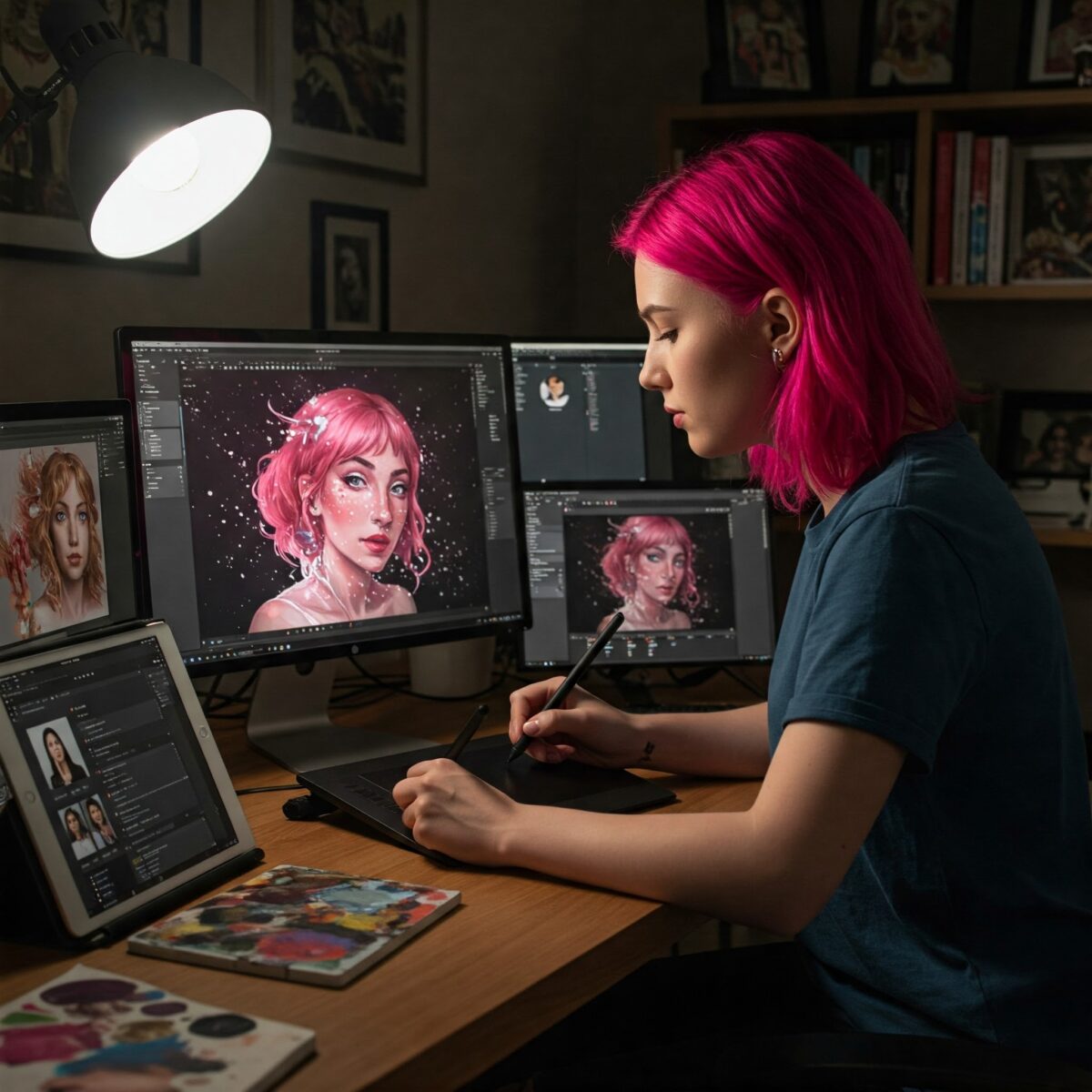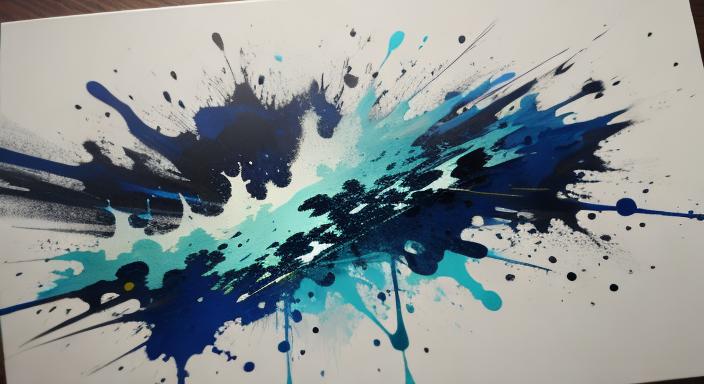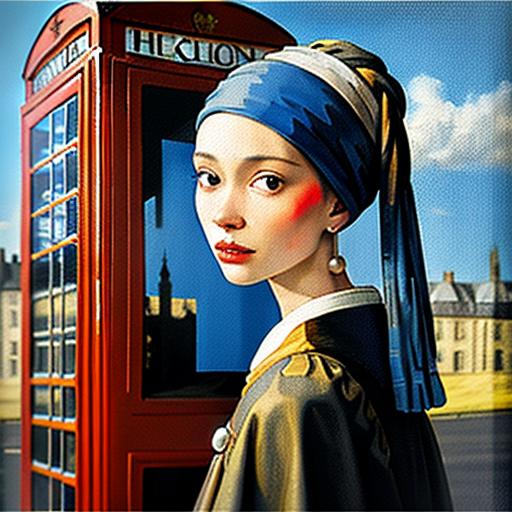The evolution of self-portraits has come a long way since artists first gazed into polished metal or early glass mirrors and attempted to capture their own likenesses. From the Renaissance masters who pioneered the art of self-representation to today’s digital creators who express themselves through pixels and filters, self-portrait history has remained one of art’s most intimate and revealing forms. This journey through time shows not just how artistic techniques have evolved, but also how our understanding of identity and self-expression has transformed across centuries.
Key Points:
- Self-portraits emerged as a distinct genre during the Renaissance
- Artists used mirrors and careful observation techniques to capture their likenesses
- Dutch Golden Age painters like Rembrandt revolutionized psychological depth in self-portraiture
- Modern artists used self-portraits to express inner emotions rather than exact appearance
- Photography expanded self-representation possibilities in the 20th century
- Digital technology and social media have democratized self-portraiture for everyone
The History of Self-Portraits Begins: Renaissance Innovations
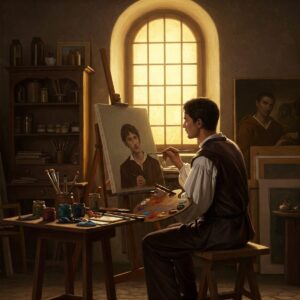
The Renaissance period marked the true beginning of self-portrait history as we know it today. Before this era, artists rarely depicted themselves as main subjects. With improved mirror technology and a new focus on humanism that celebrated individual achievement, Renaissance artists began studying their own faces with unprecedented interest.
Artists like Albrecht Dürer and Leonardo da Vinci used small convex mirrors to observe themselves, carefully translating their observations onto wooden panels with oil paints. These early self-portraits weren’t just demonstrations of technical skill—they were declarations of the artist’s status as an intellectual and creator rather than a mere craftsman.
Dürer’s self-portraits, particularly his 1500 self-portrait in which he presents himself Christ-like, show how self-portraiture became a powerful tool for artists to control their public image. These works required exceptional observation skills and meticulous technique to achieve accurate likenesses using the limited mirror technology of the time.
For a deeper exploration of Renaissance painters and their techniques, check out our Renaissance art beginner’s guide.
Dutch Golden Age: The Psychological Turn
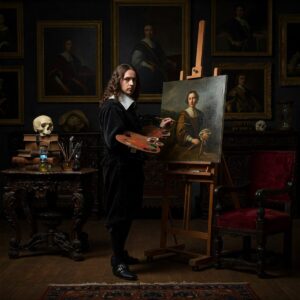
Self-portrait evolution took a dramatic turn during the Dutch Golden Age when artists like Rembrandt van Rijn began exploring the psychological dimensions of self-representation. Rembrandt created nearly 100 self-portraits throughout his career, documenting his journey from ambitious young artist to reflective elder.
What makes Rembrandt’s self-portraits revolutionary is their honesty and emotional depth. Unlike many of his contemporaries who presented idealized versions of themselves, Rembrandt didn’t shy away from showing his aging face, personal struggles, and changing fortunes. His masterful use of chiaroscuro (dramatic contrasts between light and shadow) created powerful psychological portraits that seemed to reveal the inner person.
“Rembrandt’s self-portraits form an autobiography in paint that reveals more than written words ever could.”
Art historian Ernst van de Wetering
This period established self-portraits as not just records of appearance but as emotional and psychological explorations—a concept that would become central to self-portraiture in later centuries.
Modern Era: Expression Over Appearance

By the late 19th and early 20th centuries, self-portrait painting techniques underwent another revolution. Artists like Vincent van Gogh and Egon Schiele used self-portraiture not to demonstrate technical virtuosity but to express intense emotions and inner states.
Van Gogh’s self-portraits, with their swirling brushwork and vibrant, non-naturalistic colors, reveal his turbulent emotional life. Frida Kahlo later created deeply personal self-portraits that incorporated symbolic elements to express her physical pain, cultural identity, and emotional struggles.
The self-portrait had evolved from a demonstration of skill to a raw form of self-expression where emotional truth took precedence over physical accuracy. Artists began using distortion, unusual color choices, and symbolic elements to reveal aspects of themselves that a mirror-accurate image could never capture.
For more on how artists express emotions through color choices, visit our article on color theory basics.
The Photographic Revolution
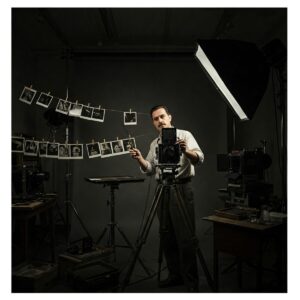
The invention and refinement of photography in the 19th century transformed self-portraiture forever. For the first time, artists could capture their exact likeness without requiring painting skills. Early photographic self-portraits required technical knowledge and specialized equipment, but they offered unprecedented accuracy.
By the mid-20th century, photographers like Cindy Sherman began using self-portraiture to explore questions of identity, gender, and social roles. Sherman’s “Untitled Film Stills” series featured herself in various stereotypical female roles from movies, challenging viewers to think about how identity is constructed and performed.
Photography democratized self-portraiture, making it accessible to people without traditional artistic training. It also expanded the creative possibilities, allowing for experimentation with multiple exposures, unusual perspectives, and darkroom manipulations that created dreamlike or surreal self-images.
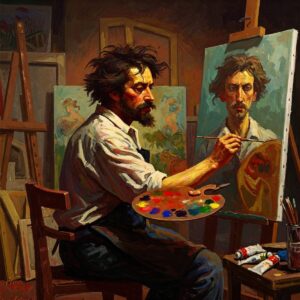
The relationship between traditional painting and photography continues to evolve. Learn more about this intersection in our article on how to make digital art look traditional.
Digital Age: Self-Portraits for Everyone
Today’s self-portrait history is being written in pixels. Digital technology and social media have completely transformed how we create and share images of ourselves. The smartphone camera, editing apps, and platforms like Instagram have made self-portraiture an everyday practice for billions of people worldwide.
Digital tools have expanded artistic possibilities enormously:
| Era | Primary Tools | Defining Characteristics |
|---|---|---|
| Renaissance | Mirrors, oil paint | Precise observation, status symbols |
| Dutch Golden Age | Improved mirrors, oil paint | Psychological depth, dramatic lighting |
| Modern | Various paints, expressionist techniques | Emotional expression over accuracy |
| Photographic | Cameras, darkroom techniques | Accessibility, experimentation |
| Digital | Smartphones, editing software, AI | Instant sharing, filters, manipulation |
Contemporary digital artists use everything from simple selfie apps to sophisticated AI tools to create self-portraits that would have been impossible in previous eras. Some digital artists create hyperrealistic self-portraits that surpass what photography can capture, while others use digital tools to create fantastical or conceptual self-representations.
For artists interested in exploring digital self-portraiture, our article on AI art generation provides valuable insights and resources.
Self-Portrait Techniques Across Time
Throughout self-portrait history, certain fundamental techniques have remained important while evolving with technology and artistic movements:
- Observation tools: From polished metal and glass mirrors to digital cameras
- Lighting control: From studio windows to artificial lighting to digital manipulation
- Composition choices: How artists frame themselves reveals their self-perception
- Expression and pose: From dignified Renaissance poses to emotional modern expressions
- Symbolic elements: Objects included to communicate identity and status
- Technical innovation: Each era brings new tools that expand possibilities
Understanding these techniques helps artists create more meaningful self-portraits regardless of their chosen medium. For those interested in portrait techniques beyond self-portraiture, our guide on mastering portrait painting basics provides excellent fundamentals.
Social Media and the Democratization of Self-Portraiture
Perhaps the most revolutionary aspect of contemporary self-portrait evolution is its democratization. Throughout most of art history, self-portraiture was practiced primarily by professional artists. Today, billions of people regularly create and share images of themselves.
This shift raises interesting questions about art, identity, and self-presentation. The casual selfie may seem far removed from Rembrandt’s introspective self-portraits, but both serve similar human needs: to document our existence, control how others see us, and explore our changing identities.
Contemporary artists continue to push the boundaries of what self-portraiture can be, incorporating everything from performance art to virtual reality. Many explore how our digital personas relate to our physical selves, creating work that bridges the gap between traditional art history and our hyperconnected present.
For a broader look at how digital technology is changing art education and creation, see our article on the future of art education.
Conclusion
The evolution of self-portrait history from Renaissance masters to digital creators reflects not just changing artistic techniques but our evolving understanding of identity itself. What began as a demonstration of skill and status has become a universal form of expression accessible to anyone with a smartphone.
Despite these technological changes, the core of self-portraiture remains remarkably consistent: the human desire to see ourselves, understand ourselves, and show ourselves to others. Whether created with oil paint and a mirror or a smartphone and filters, self-portraits continue to be among art’s most intimate and revealing forms.
FAQ: Evolution of Self-Portraits and Techniques
What are the most famous self-portraits in art history?
Some of the most celebrated self-portraits include Albrecht Dürer’s 1500 Self-Portrait, Rembrandt’s many self-portraits (particularly his later works), Vincent van Gogh’s Self-Portrait with Bandaged Ear, Frida Kahlo’s The Two Fridas, and Cindy Sherman’s Untitled Film Stills series.
How did Rembrandt develop his self-portrait techniques?
Rembrandt created nearly 100 self-portraits throughout his lifetime, refining his technique over decades. He mastered chiaroscuro (dramatic light and shadow) to create psychological depth and used increasingly loose, expressive brushwork in his later works to convey emotion and character rather than just physical appearance.
What can we learn from analyzing Van Gogh’s self-portraits?
Van Gogh’s self-portraits reveal his emotional state, artistic development, and personal struggles. His vibrant colors and distinctive brushwork show his unique perception of himself. The series of self-portraits created during different periods of his life, particularly during his time in Arles and Saint-Rémy, document his changing mental state and artistic evolution.
What are some tips for creating effective self-portrait photography?
For compelling self-portrait photography: experiment with lighting (natural window light often works best); use a tripod and remote shutter or timer; try different angles rather than just straight-on; consider the background and what it says about you; and don’t be afraid to try different expressions beyond just smiling.
How has selfie culture influenced traditional self-portraiture?
Selfie culture has both democratized self-portraiture and changed how professional artists approach the genre. It has brought attention to questions of authenticity, idealization, and self-presentation that have always been central to self-portraiture. Many contemporary artists now incorporate elements of selfie culture into their work, either embracing or critiquing its conventions.

